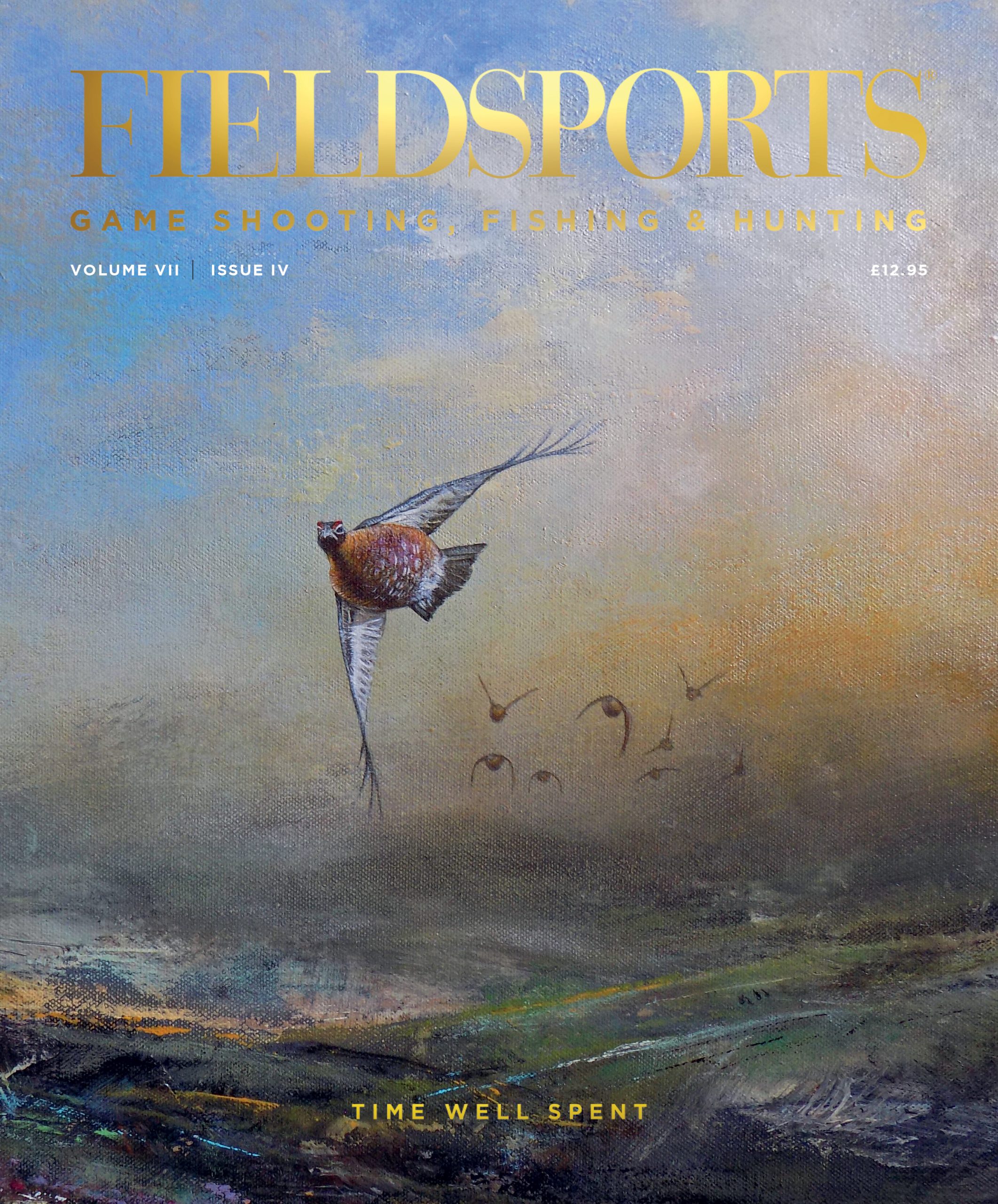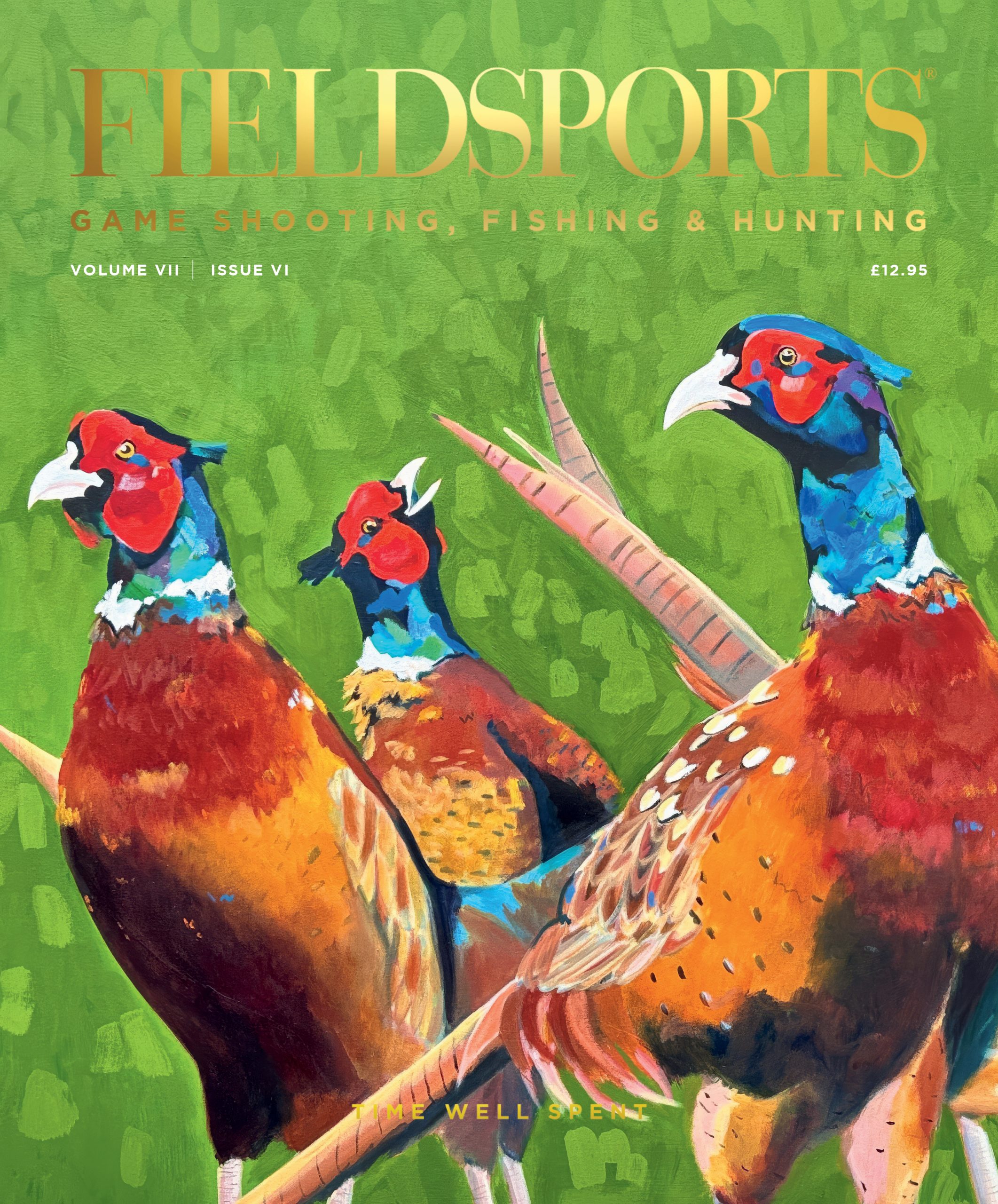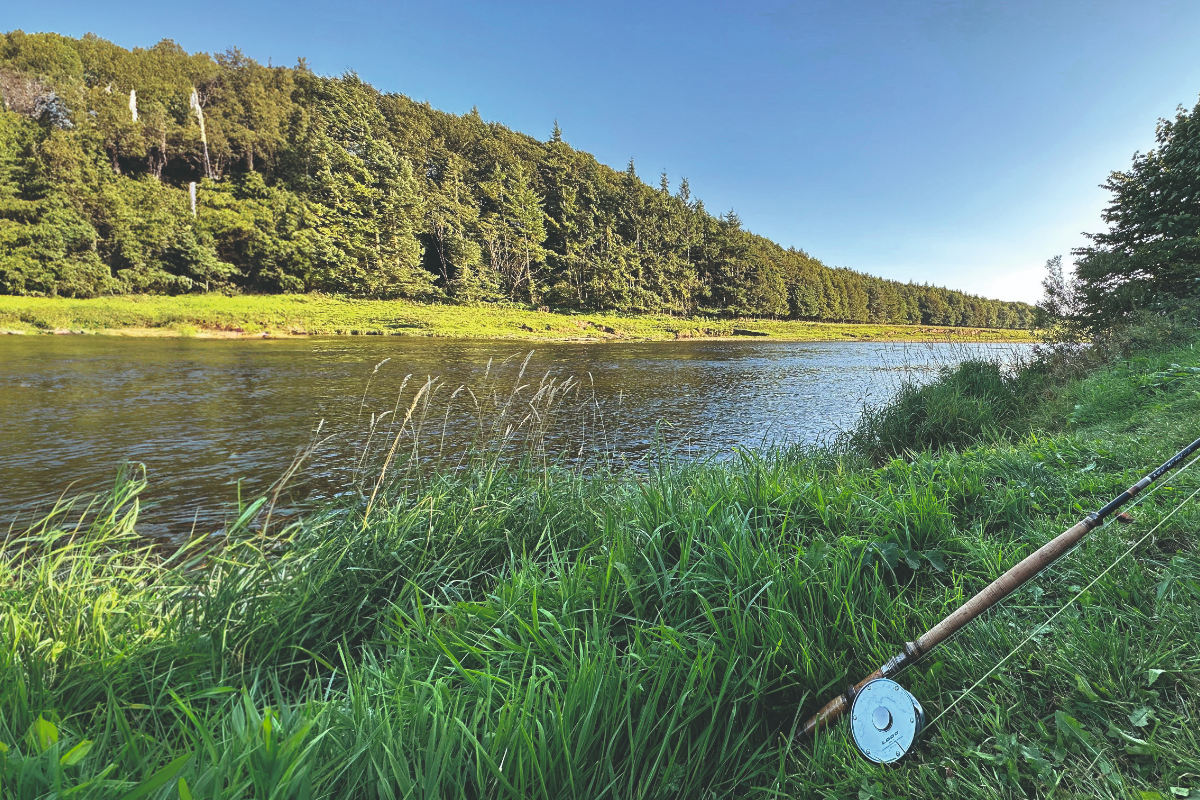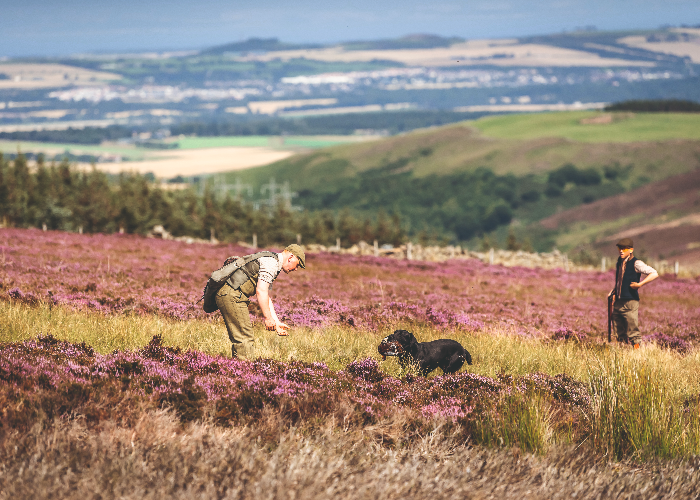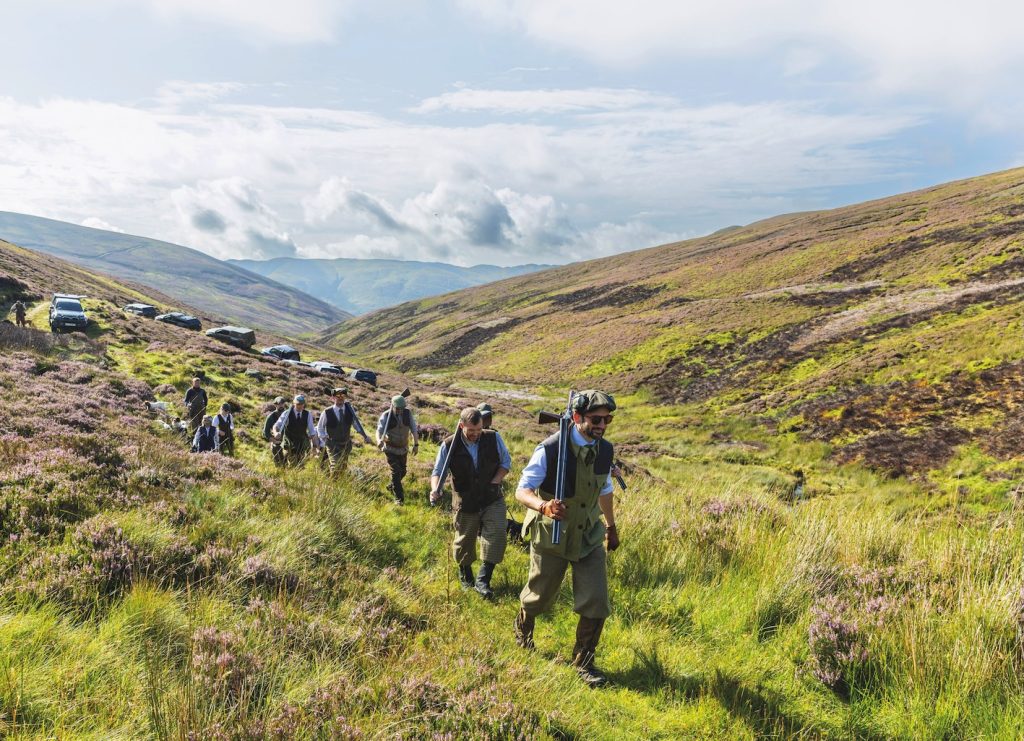Godmersham Park: One of the Finest Shoots in the UK
Godmersham Park in the Kent Downs — an award-winning conservation estate celebrated for its outstanding game shoot and rich biodiversity. By Matt Kidd.
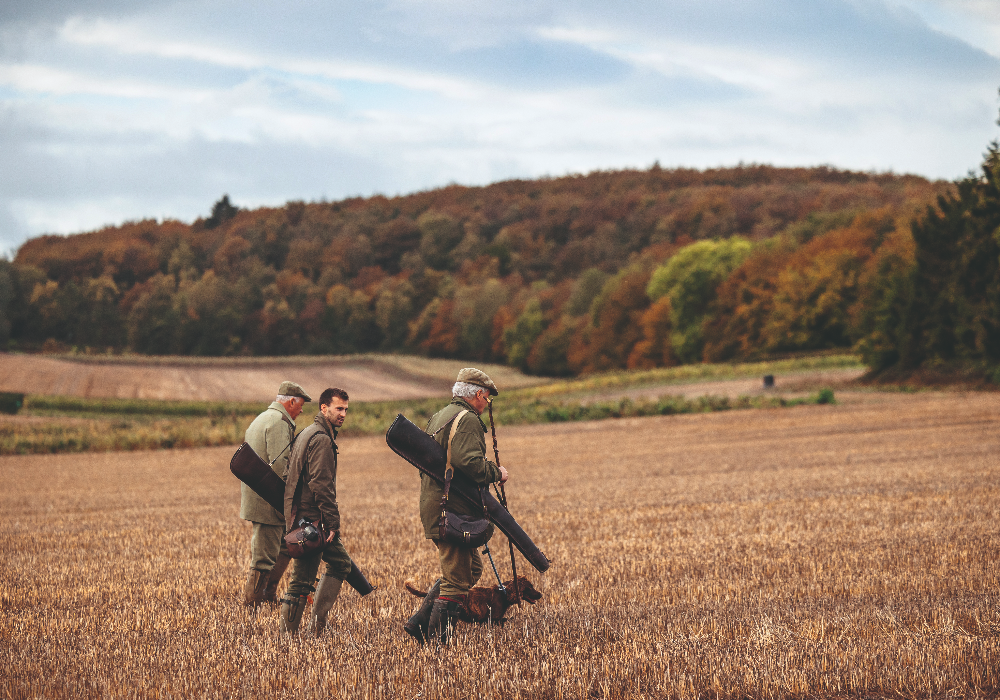
Of the hundreds of shoots I have visited – from Dartmoor to the Cairngorms, Snowdonia to the Kent Downs – the Godmersham Park conservation estate is up there with some of the very best. Not for being the highest, voluminous nor most dramatic, but undoubtedly for being the prettiest. Indeed, that is subjective and what you or I consider to be so may be worlds apart, but this estate – whether in resplendent autumn foliage like I saw it or otherwise – has some solid claims to fame and even more to shout about.
A literary and historical connection
Firstly, take out a fresh tenner from your wallet, flip it over to the back (opposite side to that adorning our late Majesty the Queen), and the Palladian-style house you’ll see is that of Godmersham Park. The house – then owned by her brother Edward Knight – was regularly frequented by novelist Jane Austen and is believed to have inspired one of her famous titles: Mansfield Park. She is also illustrated on the same side of the £10 note.
An award-winning conservation estate
The next, far more recent and maybe more relevant claim to fame is that this shoot in the heart of the Kent Downs was the recipient of the 2023 Silver Purdey Award for Game & Conservation. An accolade that the team are justifiably and incredibly proud of, being recognised by the judges for their forward-thinking approach, commitment and transformation of the 900-acre conservation estate into what it is today.
A warm welcome to the Kent Downs
And so, on the eve of Halloween, I arrived in the village of Godmersham at estate owner Fiona Sunley’s house for a shoot day and tour of the estate with Ben Palmer. Ben has been the estate manager since 2015 and is a real driving force behind its transformation. Over a coffee and bacon roll in the conservatory, he begins: “Working closely with gamekeeper Adam Horn, who has been central to the project’s success, we have strived to accomplish our mission of maximising the biodiversity potential of the conservation estate without negatively affecting its character nor its overall financial performance. This is something that has and continues to be fully supported by Fiona.”
Restoring and reimagining the estate
Bought in 1983 and lovingly restored by Fiona’s late husband, John Sunley, the estate was run in a more conventional manner prior to 2015. There had always been a shoot, and conservation was on the radar, but it had to fit in around a more traditional farming system. Ben adds: “Our first steps were to carry out a full appraisal of the existing habitats we had and the priority species that we found in them. We then categorised the estate into the following four principal habitats: wet grassland; downland grass; woodland; and arable farmland.
Focusing on key species for biodiversity
“We then shortlisted 10 keystone species, which would judge our biodiversity efforts: lapwing, hares, turtle doves, grey partridge, tree sparrows, yellowhammers, spotted flycatchers, barn owls, kestrels and water voles. Apart from very small populations of turtle doves and yellowhammers, eight pairs of spotted flycatchers, a single pair of kestrels and the occasional passing barn owl, none of the species were present. It was to be a considerable challenge, but one we thought possible.”
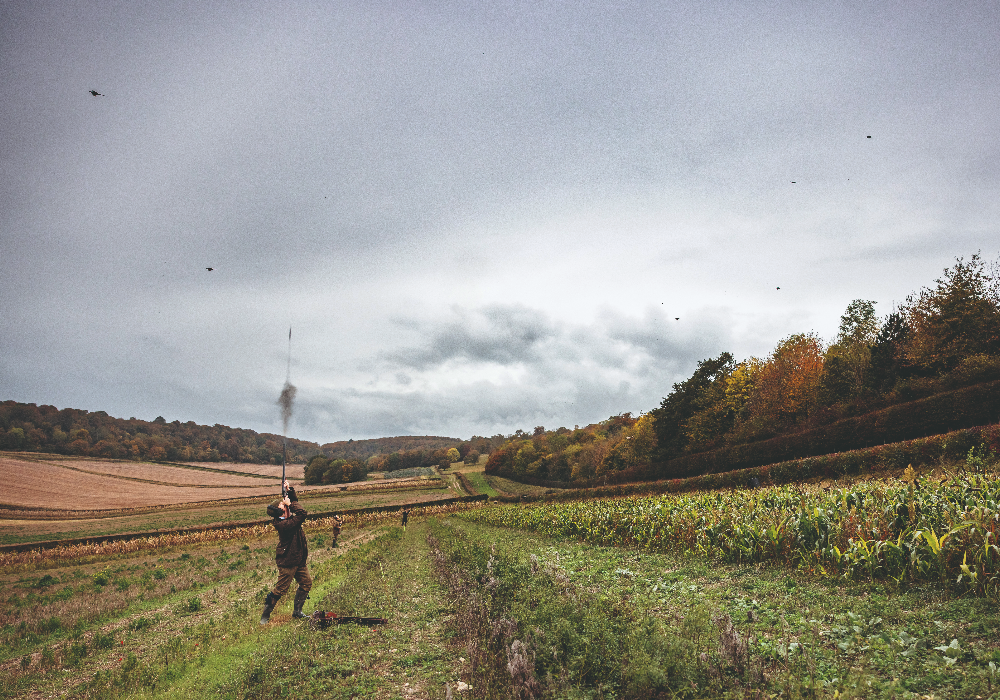
The shooting day begins
With all the Guns present it was to the front of the house for the briefing, with Ben as host. There would be four drives in total, Guns numbering nine, with a halfway stop for elevenses at the temple folly overlooking the main house which is now home to the Association of British Dispensing Opticians. The day would then conclude with a homemade lunch in the conservatory of Fiona’s home.
Conservation in action
Over the low roar and grinding audio natural to that of Ben’s old Defender as we made our way to the first drive, High Drive, we resumed our chat. An obvious first step and central to the estate’s rapid change was the implementation of the ‘three-legged stool’ of conservation: creation of habitat, availability of food (“through feeders initially and later added to by specific wildflower margins,” as Ben explains) and rigorous legal predator control conducted by Adam.
Changing the farming system
In tandem, Ben changed the way the farm operated and – with the help of Natural England advisor Dan Tuson – has explored all Stewardship options available that make financial sense. “Essentially, we worked on a simple equation that if an existing farming income was £X per acre, and a stewardship option would match it or better, whilst contributing positively towards our biodiversity targets, then we would do it. As a consequence, we took 50 acres back from our arable farming tenant, which we instead dedicated to conservation estate plots and margins. At the same time, we planted several thousand metres of fully funded hedgerows which provide a wonderful habitat for a wide range of the species that we have been trying to encourage.”

Building a habitat mosaic
In addition to the new thick, wide hedges at this conservation estate, Ben lists off lots of other jobs completed, including adding 20 acres of wild bird seed mixes, erecting over 300 bird boxes (built by Adam in his spare time), altering grazing regimes, creating dew ponds and new scrapes for breeding lapwing, adding margins and 4,000m of beetle banks, and, in the hands of woodland manager Ben Ballard, creating better rides, opening canopies, managing scrub and so much more. “It’s all part of a massive puzzle,” he explains, showing me dramatic before and after pictures once we pulled up, “and we are very lucky with the resources we have available to do so much.”
Results of a conservation estate vision
Fast-forward eight years and the records show an immense difference, including over 10 successful breeding pairs of lapwing in the wetland areas, an abundance of hares, over 120 over-wintering yellowhammers, up to 20 tree sparrows, four breeding pairs of barn owls, the same number of kestrels, and up to nine spring pairs of grey partridges. Migratory turtle doves and spotted flycatchers continue to breed at similar levels and, following many years of rigorous mink control, the estate has now been chosen as a translocation site for vulnerable populations of water voles. Ben’s passion is palpable, and his camera roll is filled with videos and pictures of various nests, chicks, and even a barn owl that visits Ben’s home for supplementary food almost nightly – much to his son’s joy – when conditions are right.
The sporting side of Godmersham Park
Back to the sporting side of things, High Drive consisted of a considerable volume of partridge with some tall pheasants making the most of a considerable wind. To the surprise of many Guns, over 100 chirping greys – admittedly released, but thriving – was a great spectacle during the middle phase of the drive.
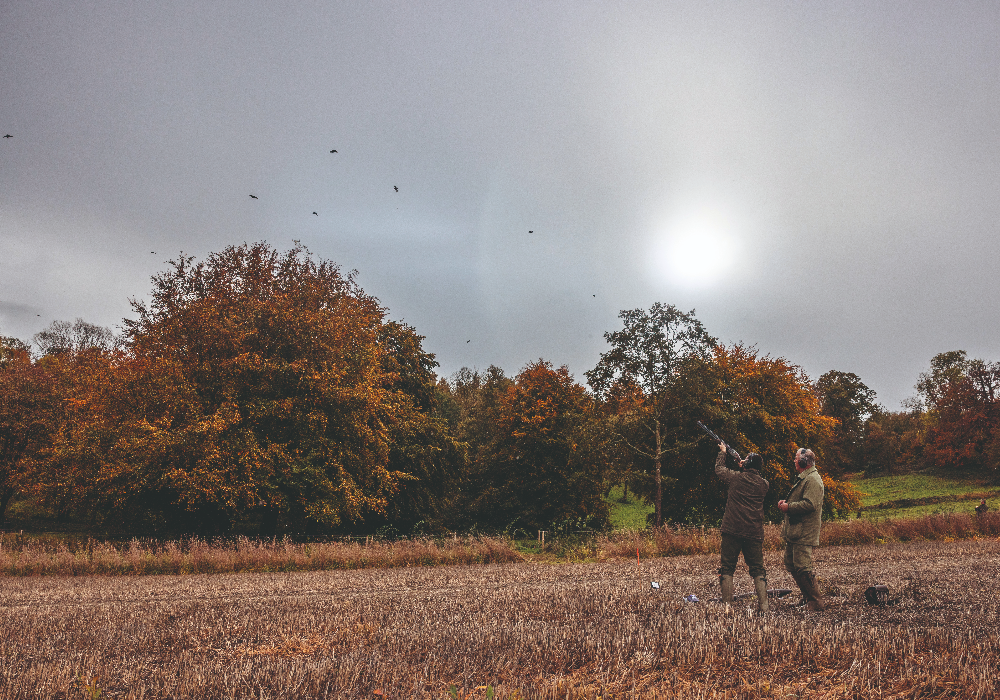
Spectacular drives and scenery
The second and most picturesque drive, BB1, where Guns were stood far apart in a narrow stubble field with a tall bank of mature woodland in front with a strip of maize and another thick woodland belt behind, showed some truly spectacular pheasants. Not quite the likes of some of North Yorkshire, Wales nor Devon’s finest, but certainly up there with the best I’ve seen in the south-east. Proof, too, that a shoot can – with the right approach – be biodiversity-minded, financially viable, and offer great quality birds you would return for; and in good volume, too.
Elevenses and the Temple Folly
It was a short drive to the temple folly once all the birds had been accounted for, which offered beautiful views of the main house down a ride. Elevenses comprised a light, yet spot-hitting combination of delicious homemade sausages and consommé, a little homemade tipple and some sweet treats. Leaving the grandeur of the ivory-white folly columns behind, we moved to Chalk Hole, a drive at the pinnacle of a hill overlooking the house, which can show differently whichever way the wind blows. With Guns moving up a few on their number, Adam and his beating team did a great job of giving everyone plenty of shooting before the final drive, Square Wood, considered the estate’s signature drive.
Square Wood: the signature drive
It was here that the Guns – made up of a lord, a farmer, a champion clay shot, a doctor, a pilot, a surgeon and a consultant – were truly on a level playing field, tested by pheasants climbing, crossing, gliding and dipping on the wind. It was quite something, especially in this neck of the woods.
The backdrop of Square Wood was of rolling hillside, separated by those stunning thick, dense hedges, blocks of turning broadleaf trees, wildflower margins, maize strips, and plots of brassicas, sorghums, millets and kales. It portrays a beautiful vision of a lowland jigsaw of habitats, all working together for wildlife, where only a few years ago at Godmersham Park conservation estate one would have seen unbroken stubble surrounded by woodland.
A model for others to follow
“We’re hoping that we have created a template that others might be able to follow,” concludes Ben.
I believe they have.
Related Articles
Get the latest news delivered direct to your door
Subscribe to Fieldsports Journal
Elevate your experience in the field with a subscription to Fieldsports Journal, the premium publication for passionate country sports enthusiasts. This bi-monthly journal delivers unparalleled coverage of game shooting, fishing and big game across the UK and beyond.
Each issue offers a stunning collection of in-depth features, expert opinions and world-class photography, all presented in a timeless yet contemporary design.
Save 10% on shop price when you subscribe, with a choice of packages that work for you. Choose from Print & Digital or Digital only with each journal delivered directly to your door or via the app every other month, plus access to past issues with the digital back issue library.
